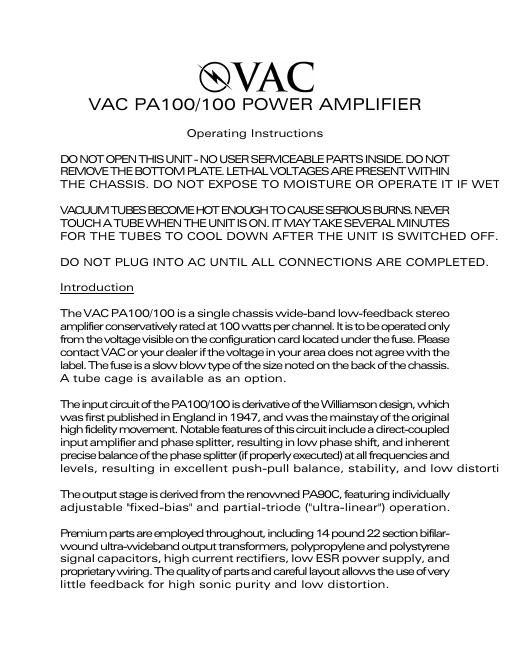Vac pa 100100 owners manual
This is the 11 pages manual for vac pa 100100 owners manual.
Read or download the pdf for free. If you want to contribute, please upload pdfs to audioservicemanuals.wetransfer.com.
Page: 1 / 11
